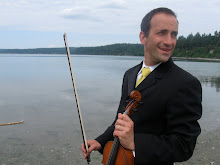Dear Families,
Every year nursery children create new ways to play with the open-ended materials in the classroom. Here are some of my observations from the last few days.
Aprons as costumes -- I moved the aprons we use for dishwashing into more prominent places. Immediately they became horse reigns. Tuesday they became life jackets for children planning to take boat trip.
Many children in the loft -- While there is occasional tension about getting into or out of the loft, our children have done quite well at safely negotiating their disagreements. Sometimes many children are in the loft at once. If a child is blocking the way up, that child almost always "opens the gate" with a gentle reminder from the teacher (several children have filled this role). Sometimes the loft is clear; sometimes many toys go up into the loft. I try to guide the children to remove items from the loft in a safe way (e.g., it is fine to float a silk down; throwing something heavy down would not be OK). Two older children were setting up a playroom in the loft, and while they were disappointed that I would not keep all the other children out of the loft for the entire morning, they did show resilience and flexibility as other children passed through. Children go up to and out of the loft from at least 3 different directions (which makes it much safer than if there were just one way up and down).
As I have written elsewhere, my sense is that it is helpful in the first 4 years to provide lots of opportunities for gross motor development (climbing, jumping, balancing, walking on uneven surfaces, and the like); from a strong foundation in larger movements, students will be prepared for success with fine motor and cognitive development in the later years. Your children are successfully using the loft to develop a sturdy foundation.
Biology Experiences in the Woods and the Classroom -- We observed a salamander with a severed tail on Monday at observed the creature's strength; teachers commented on the ability to grow a new tail and how remarkable that was. Tuesday we got to observe (safely) a large spider in a jar before William placed it in the garden--a bit of serendipity here because 7th & 8th grade will play and sing "Itsy Bitsy Spider" for our nursery children on Wednesday. We have heard many tree frogs near our berry patch playground but have not seen one yet.
Singing Games in the Woods -- We have been singing "Bear Went Over the Mountain," "Fiddle Me up to London Town," "Then We To to Market," and "Jim Along Josie" in the woods. The uneven terrain provides even more opportunity for children to challenge themselves and develop. Some children sing along merrily.
Conflicts Resolving Well, if not always exactly how a child might wish -- While they happen infrequently, we have occasional conflicts over a toy or location. I want the children to develop emotional intelligence and other skills, so I do not necessarily solve a problem right away--while trying to keep children safe from hitting and the like (which is extremely rare to almost nonexistent in our current class--it is normal for children to respond with action first). Sometimes children become quite upset at one another (a child walking around a gate the first child made; a child wanting to reserve a large part of the room with no other children); as long as the other children can play, I reflect back the child's frustration without solving the problem right away. This is to say, I am much more with a child vocalizing discontent with me or crying rather than yielding to a child's request--reasonable to the child but unhealthy for the class as a whole (for example, a child requesting that only older girls can play in a certain area)--just to avoid an upset. It can sometimes be intense, but I also find in the long term it helps children to work towards conversation and compromise.
That being said, I have observed a number of situations in which 2 or more children seemed ready to bear down, dig in, stand tall and not yield at all transform with the slightest suggestion from a teacher or another child to "try it again." 2 students who seemed ready to combat are now playing together or have become engaged in other parts of the room.
Sometimes to often, a conflict over a toy is less about the toy itself than about relationship with other children and with adults--young social scientists, children become--without malice--curious about the reaction of other children if, as an experiment, I also try to play with this toy or this exact location. They also want to see how adults will respond.
With warmth and light,
William Dolde
Wednesday, September 23, 2009
Subscribe to:
Post Comments (Atom)


No comments:
Post a Comment